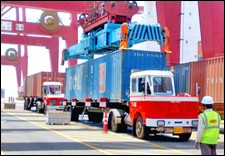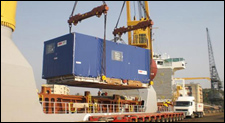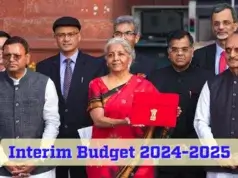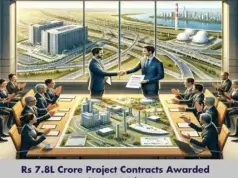 Given India’s need to create infrastructure to sustain its growing economy and leverage its potential as a market, it would need to innovate and develop ways to efficiently manage logistics and reduce transaction cost of doing business to and from India, says Adarsh Hegde, Executive Director, Allcargo Logistics Ltd.
Given India’s need to create infrastructure to sustain its growing economy and leverage its potential as a market, it would need to innovate and develop ways to efficiently manage logistics and reduce transaction cost of doing business to and from India, says Adarsh Hegde, Executive Director, Allcargo Logistics Ltd.
Today, India stands at a very unique position in its evolution as an economic power house. It has all the necessary resources to scale its growth in terms of GDP, GNP, Per Capita Income, Purchasing Power Parity, FDI, new investments in terms of manufacturing as well as the most crucial of all, research and development. It has the political structure, albeit with some nuances of implementation of policies, transparent judiciary and effective laws specific to copyright regulations and company formations, which makes this country quite unique as compared to neighbours like China, which are in a manner more competitive as an economy in size and scale to India.
The very fact that over 60 per cent of our population is below 35 years of age gives us a glimpse of the potential of the market that presently resides in the country. No wonder that in terms of growth of electronic products from consumer durables to smart phones India has seen one of the fastest growths in the category in a very short period of time. It second to China in terms of volumes sold per month, which is tremendous if you take into account the global slowdown in product sales across developed economies.
This trend is true in many other sectors of the economy. In manufacturing today the country is a hub for major small car manufacturers producing vehicles in India and exporting, in addition to selling in domestic markets. India in a way has overtaken China as a hub for small car manufacturing also because of our transparent copyright laws, engineering capabilities and adherence to global quality standards. The outlook for information technology industry, pharmaceuticals and precision engineering is also very positive.
Overall, the macroeconomic potential of India is rock solid, but it needs tremendous support of the political structure, transparent policy guidelines and most important of all infrastructure to sustain its growth in coming years.
The very reason why countries like China, Singapore, Dubai, Indonesia and Malaysia have been successful in attracting investment and traction in their growths is because they have been proactive in creating the right hard infrastructure to support their resources, capabilities and skills. These range from roads, ports, rail connectivity, roads to ports accessibility, transparent taxation and investment policies etc. As compared to these economies, India’s biggest challenge as well as the largest untapped opportunity lies in creating infrastructure to support its fast paced growth.
The only macroeconomic variable which can adversely affect our rise is the lack of adequate and timely availability of infrastructure for supporting the economy. The realisation of the same has been accepted at the highest level of policymaking of the country and the results have been the renewed focus by the Planning Commission and the PMO in terms of allocating investment on fast track basis to clear pending infrastructure projects across the country. But taking into consideration the historical evidences, the weakest link in this chain will be the timely and quick implementation of these policies by the executive branch of the government.
 Given India’s unique demography of over 7,000 km of coastline at one end and landmass on the other, infrastructure will be the key in our survival as an attractive economy. To put this into context, at present logistics cost of doing business in India is one of the highest in the world. This is reflected in the 14 per cent cost of logistics of our GDP, as compared to 10 to 11 per cent in other economies. That means for every product manufactured in India, its logistics from factory to final consumer point of sale is at least 4 to 5 per cent higher than in other economies. This places an additional burden not only on the economy but also the stakeholders of the economy of billions of dollars in terms of additional capital just to cover the inefficiencies. This investment could have been well spent if the logistics of the country is as effective as global standards. Case in point: road as a medium of transportation accounts for over 65 per cent of share, whereas rail has 30 per cent and other mediums have rest.
Given India’s unique demography of over 7,000 km of coastline at one end and landmass on the other, infrastructure will be the key in our survival as an attractive economy. To put this into context, at present logistics cost of doing business in India is one of the highest in the world. This is reflected in the 14 per cent cost of logistics of our GDP, as compared to 10 to 11 per cent in other economies. That means for every product manufactured in India, its logistics from factory to final consumer point of sale is at least 4 to 5 per cent higher than in other economies. This places an additional burden not only on the economy but also the stakeholders of the economy of billions of dollars in terms of additional capital just to cover the inefficiencies. This investment could have been well spent if the logistics of the country is as effective as global standards. Case in point: road as a medium of transportation accounts for over 65 per cent of share, whereas rail has 30 per cent and other mediums have rest.
Although the national highway initiative has added additional kilometres of roadways it has still not matched the economic requirements to facilitate seamless and efficient transportation through roads. Rail over the last decade has opened up private investment in the sector, but still faces many challenges in terms of transparency in policy guidelines, accessibility for private container operators and other players. Thus, rail has not been looked at as an alternative to road transportation at a macro level. Thus, congestion on India highways has decreased the nation’s ability to reduce the cost of transaction for doing business to and from India.
These challenges have given rise to a business evolution of an alternate medium of transportation within India — coastal shipping. With almost half of India covered with sea line, coastal shipping will be the answer to overcome congestion, delayed time, greenhouse gas emissions and carrying heavy loads, within India. It can carry loads to and from major ports to various parts of the country in the most efficient manner, cost effective and save crucial time of logistics of critical goods. This medium is most effective for transporting bulk, break bulk and project cargo within the economy. These categories of cargoes will drive future growth for private as well as public enterprises of India.
Coastal shipping will be the key to project cargo movement within India. At present, mostly all the economic activities like setting up power plants, extension of existing refineries, setting up of alternate energy sources such as wind energy farms and urban infrastructure such as metros across cities require heavy and oversized cargo to move from location A (which is sometimes international manufacturing unit) to location B, a remote location in tier II or III cities of India. This movement, from an international location to Indian shores, is most feasible and effective through coastal shipping. These heavy loads are transported to major ports in India and from thereon through coastal shipping it is managed logistically for transporting to smaller or newer ports closer to the final consumption location.
The movement of so-called over-dimensional or oversized cargo is efficiently possible through coastal shipping in terms of economic feasibility as well as timelines, compared to movement by road or even rail. Case in point, one of the largest public petroleum companies undertook the project to expand its capacity in south India. The movement of critical components produced in various regions of India was transported through coastal shipping to its end location. At the same time heavy turbines and power plant equipment manufactured in countries like China, South Korea or even Japan are transported to India via sea route and then within hinterlands are logistically moved through coastal shipping only.
 Private service providers in coastal shipping will drive growth of the industry in India. With integration of trade relations with emerging neighbours like Myanmar, Bangladesh, Sri Lanka and even Vietnam, this form of logistics transportation will be the new growth driver for the industry. The economic relevance of coastal shipping will also be crucial given India’s endeavour to decrease dependency on roads.
Private service providers in coastal shipping will drive growth of the industry in India. With integration of trade relations with emerging neighbours like Myanmar, Bangladesh, Sri Lanka and even Vietnam, this form of logistics transportation will be the new growth driver for the industry. The economic relevance of coastal shipping will also be crucial given India’s endeavour to decrease dependency on roads.
It very important that relevant and transparent policies to boost coastal shipping should be fairly implemented for players public as well as private to make efficient usage of the medium. Particularly for India, given its coastline this could be a boom the economy is waiting for, in drastically creating efficiencies in logistics and reducing transaction cost of doing business to and from India.
Project logistics, on the other hand, will be the key driver in successfully implementing mega infrastructure projects already underway by public and private enterprises for creating the core infrastructure within the country.
Given India’s need for creating infrastructure to sustain its growing economy and to truly leverage its potential as a market, it would need to innovate and develop ways to efficiently manage logistics and reduce transaction cost of doing business to and from India. In this macroeconomic scenario, transportation mediums like coastal shipping and project logistics capability to implement mega projects on time and at budgeted costs will drive new growth for the economy into the future.











